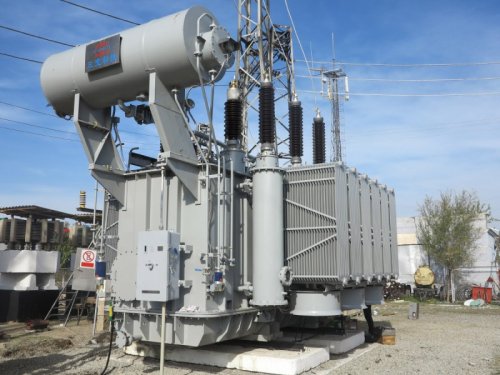Differences between three-phase and single-phase transformers
In household appliances, in welding machines, for testing and measuring purposes, single-phase transformers of relatively low power are usually used. Powerful single-phase transformers are used to power industrial power plants.
The appearance of a conventional single-phase transformer is shown in the figure. Here you can see a magnetic system in the form of a closed frame containing two rods, as well as an upper and lower yoke. Coils with the lowest (LV) and highest (HV) voltage are located on the bars.
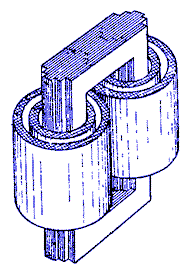
For the most rational use of the two-stage magnetic system, the windings with higher and lower voltage are divided into two parts, after which these parts are connected in series or in parallel, depending on the parameters of the designed transformer. The terminals of the HV and LV windings are located on opposite sides of the core.
If it is necessary to transform the three-phase current using single-phase transformers, take three single-phase transformers, connect their primary windings according to the star scheme, and the secondary windings according to the star or delta scheme. Thus, a three-phase group of transformers is obtained, united in a common electrical circuit with a separate magnetic circuit.
But such a solution (three separate single-phase transformers to convert three-phase current) is resorted to in extreme cases, for very high powers, when it is impossible to install a huge three-phase transformer or its manufacture is impractical. In addition, in the event of an accident in one of the phases, it is easier to replace a single-phase transformer, which (only one, not three) can be kept in stock for such a case. After all, damage to more than one phase at a time is very unlikely.
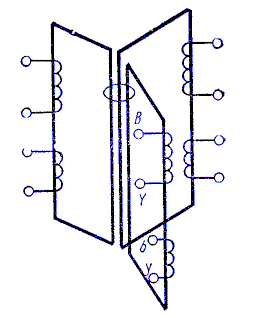
If you look at a three-phase transformer, then not only electrical, but also magnetic systems of three single-phase transformers are combined here. In practice, the system of such a transformer is constructed as follows. Take three identical two-phase single-phase transformers, whose HV and NV windings are located on only one of the two poles, and the second pole is not occupied by windings.
Let's combine the free rods of three transformers into one, and we will move the rods with coils in space 120 degrees relative to each other. If this three-phase system is now connected to a three-phase AC network, then the magnetic flux in the central rod (according to the principle of superposition of magnetic fields) will always be zero.

The central bar can therefore be removed as it plays no role functionally.The result is a three-phase magnetic system with the same lengths of the working magnetic flux path for the windings of each of the three phases.
A symmetrical spatial system with bars spaced 120 degrees apart is practically ideal, but difficult to manufacture and repair.
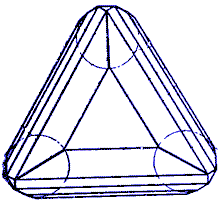
Another version of a three-phase space magnet system is one in which the magnetic circuits are grouped in a regular triangle. Such a magnetic core is wound with a continuous electrical tape. But this decision is actually applied only in exceptional cases.
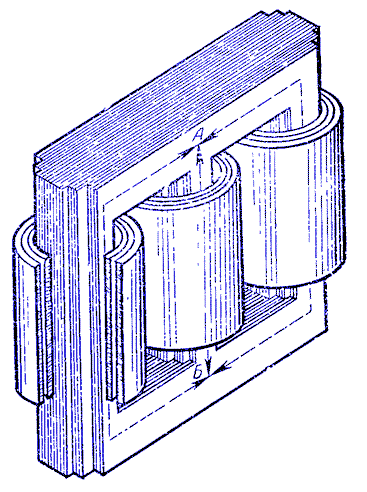
In order to simplify the design of a three-phase transformer as much as possible, to facilitate its manufacture and repair, in practice, a flat asymmetric three-level circuit is most often used. In it, three rods are located in one plane and are overlapped by two upper and two lower yokes.
Here, the path length of the working magnetic flux (AB) of the middle bar is slightly smaller than the path length of the magnetic fluxes of the side bars, which to some extent affects the difference in the no-load currents of the three phases.
The phase windings of a planar asymmetric system of a three-phase transformer are located on the rods in the same way as in a single-phase transformer, after which they are combined in a three-phase circuit, as mentioned earlier.
The cost of manufacturing and assembling such a transformer is much lower than manufacturing and assembling three single-phase transformers for the same total power. The material weight saving is about 33%. And such a transformer turns out to be much cheaper to maintain. For this reason, almost all modern three-phase power transformers are manufactured in a flat three-phase circuit.

